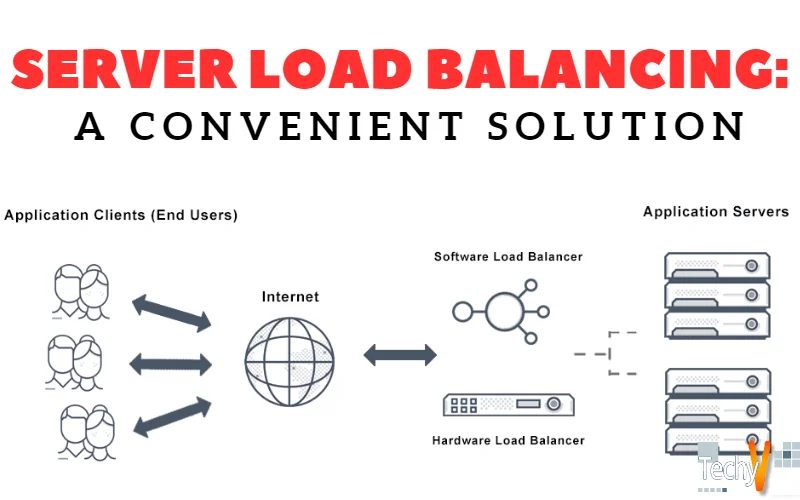Server Load Balancing: A Convenient Solution
As basically defined, server load balancing is a technique that executes distribution of work load to achieve optimizing internet protocol traffic that can be efficiently perform between network servers or server farm using numerous methods with the intention of preventing overloading of a single server . In busy and high accessibility server clusters, server load balancing is mostly significant, since quantity of demand to be forwarded to a server is hard to expect.

The administrator can settle these processes to particular constraints after he is done with the preliminary set-up. In server load balancing,a procedure called clustering can be presented as similar to taking some single servers and creating them to come out as one immense large server. Fault acceptance and load balancing can be granted both in to a system through cluster. The load-balancing method is totally apparent to the end user. Working behind a single URL may be a number of servers.
Server load balance has a lot of benefits to offer. This is evidently shown because it is very prosperous and is the vastly utilized technology nowadays. Scalability, flexibility and high availability; those are the major reasons why a company would think of advancing to a solution, which is a server load balance implementation.
Firstly, flexibility permits server load balance at any time in appending and eliminating of servers to a location. This gives chance for repairs of whichever machine at any time without giving effect to the site.
In addition, a load balancer is capable of cleverly directing traffic by means of dynamic and static algorithms, cookies, URL parsing, and much more. Next reason is its high ability because it has no involvement of an administrator because it is automatic. Server load balance can determine the status of accessible servers. It can remove any not responding server out of the rotation during detection and return them when it’s properly functioning. Last but not the least to discuss is scalability. Many servers’ load is distributed by server load balance. It is only required to include additional servers in order to enhance the serving power to a site. It is very practical and economical since a lot of small-sized to average-sized servers are less expensive compared to a little number of high-end servers. Servers can be purchased right away to accommodate the raise in traffic.
Server load balancing can be attained through a variety of ways available. Depending on the requisites, offered features, obscurity of implementation and cost. These are the factors to be considered when opting one over the other.
There are many kinds of load balancing techniques. The most common is the Round Robin method, if the load balance of the server is randomly recognized (i.e. 1, 2, 3, 4), and in that order every visitor is launched to every server. If the hardware details of the server are not similar, the implementation would be the Weighted Round Robin method, for the reason that it allocates further demands to the server to facilitate a larger capacity. It is through accordingly with their weights that designates demand to servers with their turn. On the contrary, with the same hardware details of servers, it is better to use the two methods available; the Fastest Response Time method and the Perceptive method. The former is defined as the term implies, it ensures to notice the server which takes action to the fastest query and launches latest visitor to that server. The latter forecast the server with present and past data as its basis.
In the market, there are for main vendors that provide server load balancing solution. It is important to take inspection from the leading load balancing providers. Because a lot of information can be extended to your knowledge on server load balancing for they offer vendor-detailed guides. These manuals apply practical concepts and understanding on terminologies about their products so as to assist you according to your needs.
Alteon is a branch of Nortel Networks and the developer of Layer 2-7 switches. For six successive years Alteon switching selection has been the leading fixed Layer 4-7 switch. Alteon Web switches connect servers by utilizing of up to 1,000 Mbps, 100 Mbps and 10 Mbps Ethernet links and fixed to the network structure. It speed-up client-server operation, opens structure bandwidth, and gives off loads from server-to server transfer from the structure.
The next vendor is the Cisco Systems, Inc and in June 2000, they accomplished their acquirement of Arrow Point Communications, Inc. They included the Arrow Point switches into their row of product as the CSS 11000 series of content switches. The CSS 11000 offers advance point of performance, connectivity of network, management of resources and strong load balancing serviceability within a solid, modular chassis. It is integrated with SSL (Secure Socket Layer), that lessen management difficulty and modifies protected operation flow inside an individual content switch.
Operating as an expert edition of BSDI Unix and basically customized Unix boxes are the description of F5 boxes. That is why Unix command-line and relation application are evidently present. But a web-based interface is also available which is vital to how the peripherals are constructed. By construction based on TMOS architecture, the flexible BIG-IP platform offers terrific scalability and preferences of modification.
Lastly to be mentioned is the Foundry Networks, Inc.Foundry Server lrons are entirely concrete form, moving elements are not available, resulting in less time in booting or rebooting. A small difference compared to the other load balancers we’ve tackled, Foundry switches are integrated into a network. This switch series offered today provides incorporated functionality-constructed Web Firewall to defend companies’ Web- facilitated applications. This switch series packs powerful data-center group provides hardware-based security and flexibility features
A convenient guide towards server load balancing technology enables you to obtain profound perceptive on the technology’s implementation to be used for your enhanced network operation. You should always consider a solution that is based upon your requirements.


















